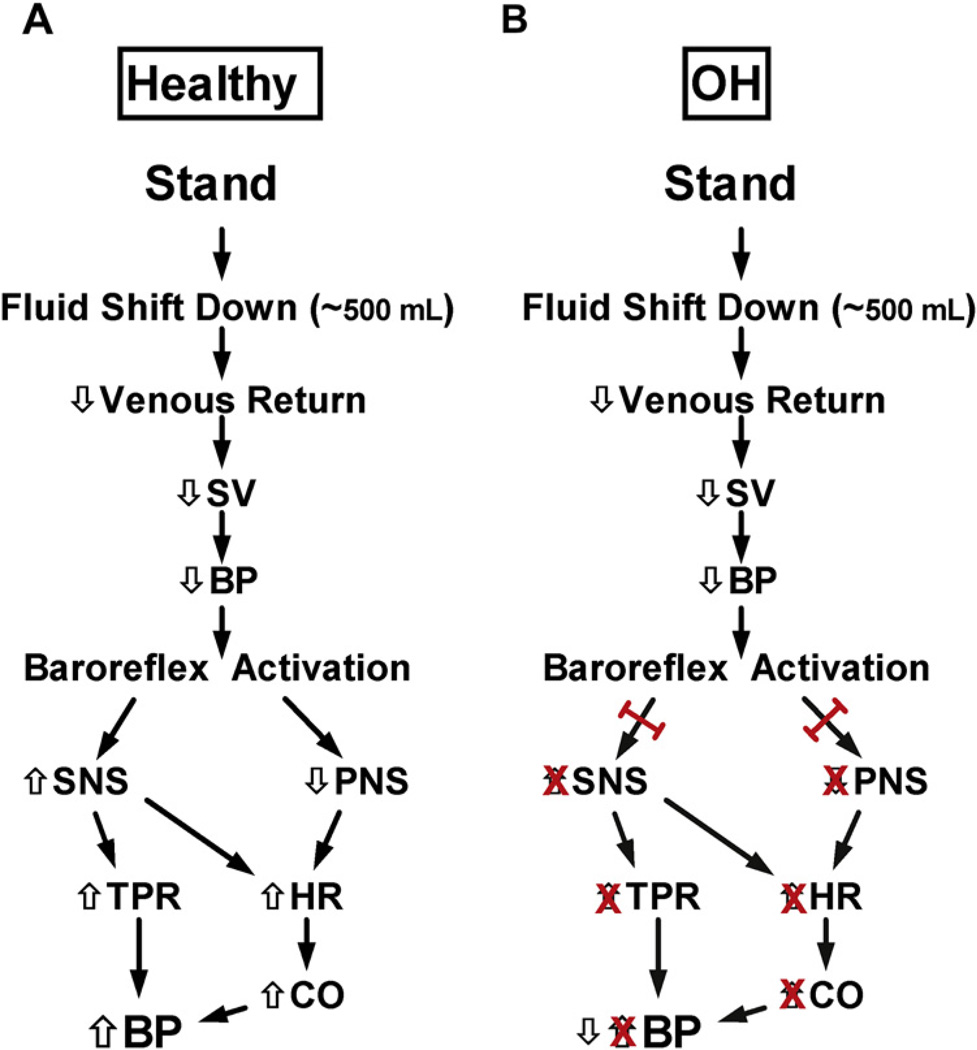Fig. 2.
Physiology of standing: healthy and orthostatic hypotension. (A) With standing, there is a downward shift of approximately 500 mL of blood, which results in decreased venous return, decreased stroke volume (SV), and eventually decreased BP. This “unloads” the baroreceptors, and triggers reflex sympathetic nervous system (SNS) activation with an increase in HR and systemic vasoconstriction (countering the initial decline in BP). In a healthy individual, the net effect of assumption of upright posture is an increase in HR of 10 to 20 bpm, a minimal change in systolic BP, and an approximately 5 mm Hg increase in diastolic BP. (B) In patients with OH, the SNS and parasympathetic nervous system (PNS) cannot be adequately engaged, so the counterregulation is absent, and a drop in BP occurs. CO, cardiac output; TPR, total peripheral resistance.

